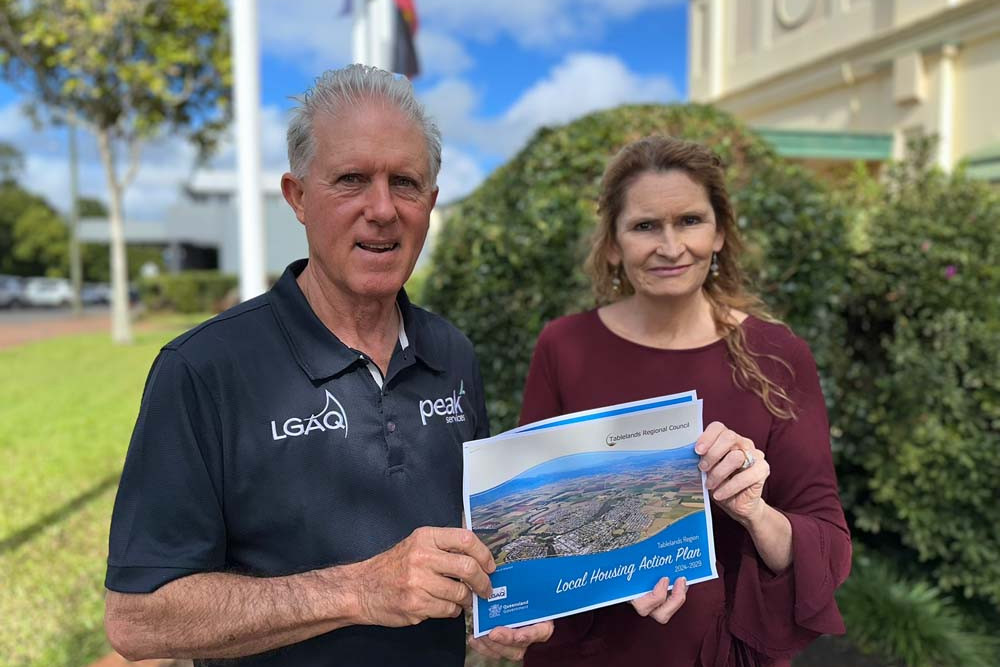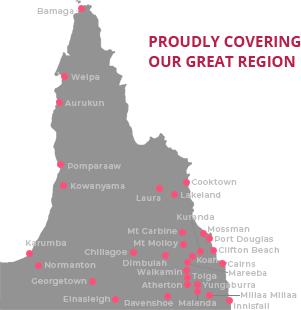Community & Business
9 July, 2024
Action plan to tackle housing pressure
A TIGHT rental market of just 0.3% and a growing population is putting pressure on housing availability in the Tablelands local government area, but a new action plan is seeking to address the shortage and improve the diversity of housing options.

The Tablelands Local Housing Action Plan has been endorsed by Tablelands Regional Council as it grapples with how to boost housing stock and also to ensure its ageing population have adequate options into the future.
With four key focus areas and 40 actions outlined in the plan, the council is hoping it will make a difference.
Mayor Rod Marti says the action plan is another positive step towards delivering more housing, in particular social and affordable homes, and better services to vulnerable Tablelanders.
“Having a roof over your head is not an unreasonable expectation and working to make more housing available for homeless and vulnerable people in our community is crucial,” he said.
“Our Local Housing Action Plan identifies four focus areas and 40 actions targeted to address significant housing challenges in the Tablelands region.
“It looks to meet the housing needs of our growing region and, for those who need it most, improves the planning framework’s response to housing supply challenges, and ensures our investment incentives support the delivery of housing.
“Ensuring there’s a workforce for major construction is also addressed, as is improved communication and collaboration between government and stakeholders and capacity-building of the community.”
The plan outlines the current housing landscape, revealing that 24% of people rent homes and that 12% of the working population live outside the Tablelands local government area (LGA).
It also reveals that 32.4% of rental households and 13.6% of homeowners are experiencing “housing stress” – that is, they are spending 30% of their wage on rent or their mortgage.
Social housing is also hard to find, with applications for social housing in 2023 (548) almost double the number in 2019 (247) and no new developments had occurred in the LGA for 16 years.
“However, there are just 348 social housing dwellings in the Tablelands region meaning that the current social housing stock does not meet demand,” the plan states.
“With no new social housing developments since 2008, the existing stock is ageing and many require maintenance.”
The LGA’s ageing population – 26% of all residents are aged 65 or over - also provides challenges for housing, as does the growing number of workers under the PALM scheme who can work in the area for up to nine months.
“The introduction of this scheme has had significant impacts on the local housing market,” the plan states.
“Previously rural workers would typically be international visitors or ‘backpackers’ who would work for 88 days to fulfil their working holiday visa requirements.”
They would often camp, stay in onsite accommodation or in backpackers style accommodation.
“The PALM scheme requires employers to support a longer stay….which is impacting local housing supply,” the plan states.
In some cases, large farming operators had purchased existing motels, caravan parks and pubs to accommodate their labour force, while others had established on-farm workers accommodation.
The other alternative was for farmers to rent or purchase existing residential homes which had reduced the availability of residential housing.
All of the issues outlined in the plan have actions attached to try to mitigate the issues impacting the housing sector.
“I’m really proud of this document that we’ve produced in conjunction with the Queensland Government, Local Government Association of Queensland and key local stakeholders, and look forward to working with them and the community to progress the actions,” Mayor Marti said.
“Available and accessible housing provides stability and safety for vulnerable people, which are fundamental in rebuilding lives and improving wellbeing, as well as alleviating the social and economic costs associated with homelessness.”


